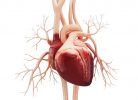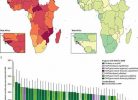Prevalence of chemosensory loss induced by SARS-CoV-2 Omicron variant in Italy
In a recent study posted to the medRxiv* preprint server, an interdisciplinary team of researchers from different countries conducted a prospective cohort study to determine the prevalence of chemosensory dysfunction in mild to moderate coronavirus disease 2019 (COVID-19) patients in Italy.

In Italy, the severe acute respiratory syndrome coronavirus 2 (SARS-CoV-2) Omicron variant, with a prevalence of 95.8%, was by far the most predominant variant. Several studies have shown smell and taste impairment as one of the consistent pathogenic manifestations of SARS-CoV-2 infection in COVID-19 patients.
Study design
This study involved adult SARS-CoV-2 positive patients residing in Friuli Venezia Giulia and Sardinia, Italy, with mild to moderate symptoms. The team compared demographic and clinical parameters with a special focus on chemosensory dysfunction of SARS-CoV-2-positive patients between 17 January, 2022, to 4 February, 2022 (proxy Omicron period) with a historical SARS-CoV-2-positive cohort of patients between March and April, 2020 (comparator period) who were evaluated during the first wave of the COVID-19 pandemic.
Self-reported data including age, gender, height and weight, obesity, smoking, and associated comorbidities like diabetes, immunosuppression, cardiovascular disease, cancer, respiratory disease, renal, and hepatic disorders were collected during the interview. Symptoms of these patients were assessed by standardized and structured questionnaires through telephonic interviews using an acute respiratory tract infection questionnaire (ARTIQ) and sino-nasal outcome test (SNOT-22) based on the scoring system for smell and taste.
A total of 779 patients were included in the study, out of which 338 (study cohort) were from the proxy Omicron period and 441 (control cohort) from the comparator period.
Findings
The researchers observed that out of the eligible 482 patients, 70.1% participated in the study and had a median age of 46, among which 54% were women. Over 34% of the subjects reported associated comorbidities with cardiovascular disorders as most prevalent (16.6%). More than 82% of the patients had been vaccinated fully for COVID-19 and 5.3% reported contraction of SARS-CoV-2 infection in the previous two years. Among the COVID-19 symptoms, 68.3%, 58. 9%, and 56. 8% of patients experienced blocked nose, fever, and dry cough, respectively. Over 32% of patients reported alteration in smell or taste, with 18% of the patients reporting a SNOT-22 greater than 2 and 5.3% reporting a score of 5. Over 21% of the participants self-reported impairment of taste perception, 25.7% impairment in flavor, while 20.1% reported alteration in both taste and flavor perception.
The researchers compared two cohorts and observed an identical distribution by age, gender, and smoking status. More than 34% and nearly 33% of the patients reported comorbidities during the Omicron and comparator period, respectively. While in the proxy Omicron period multimorbidities were more frequent (14.2%) as compared to the comparator period (7.7%), with cardiovascular disorders as the most frequent in the Omicron (16.6%) than in the comparator period (9.3%).
During the Omicron period, the most prevalent symptoms experienced by patients were blocked nose (68.3%), dry cough (56.8%), headache (55.0%), sore throat (50.9%), mucus coughing up (26.0%), and sinonasal pain (20.1%), while in the comparator period these percentage of symptoms were 26.3%, 45.1%, 45.4%, 25.6%, 12.7% and, 12.2%, respectively. In the comparator period, the most frequently reported symptoms were diarrhea, appetite loss, and red eyes.
The team found a 32.5% prevalence of chemosensory dysfunction during the Omicron proxy period which was significantly lower as compared to the comparator period (66.9%). Nearly 25% and 63% of patients experienced an altered sense of smell, while 26.9% and 57.4% experienced an altered taste in the Omicron proxy and comparator period, respectively. Moreover, in the proxy Omicron period, chemosensory dysfunction severity was significantly less compared to the comparator period.
The researchers demonstrated that 33.3% of fully vaccinated and 32.3% of partially vaccinated/unvaccinated subjects self-reported a SNOT-22 ≥ 1, reflecting that vaccination status was not predictive of chemosensory outcome. There was a prevalence of 25.1% of smell dysfunction in patients with nasal obstruction, while it was 24.3% for patients without nasal obstruction.
Conclusion
The findings of the study demonstrated that with the advent of the Omicron variant, the severity and prevalence of smell and taste dysfunction associated with COVID-19 significantly dropped.
The prevalence of chemosensory dysfunction was common in COVID-19 patients with and without nose block, reflecting that only in a few cases chemosensory disturbance was due to conductive loss. The authors highlighted the need for data collection regarding the persistence rate and recovery of SARS-CoV-2 Omicron-variant-induced chemosensory loss for understanding its evolution and to further determine the burden of chemosensory dysfunction in COVID-19 patients.
The authors also cautioned that this study has some limitations including the exclusion of hospitalized patients, self-reported assessment of symptoms, lack of psychophysical examination, and heterogeneity in the vaccine status.
*Important notice
medRxiv publishes preliminary scientific reports that are not peer-reviewed and, therefore, should not be regarded as conclusive, guide clinical practice/health-related behavior, or treated as established information.
- Paolo Boscolo-Rizzo, Giancarlo Tirelli, Pierluigi Meloni, Claire Hopkins, Giordano Madeddu, Andrea De Vito, Nicoletta Gardenal, Romina Valentinotti, Margherita Tofanelli, Daniele Borsetto, Jerome R. Lechien, Jerry Polesel, Giacomo De Riu, Luigi Angelo Vaira. (2022). COVID-19-related Smell and Taste Impairment with Widespread Diffusion of SARS-CoV-2 Omicron Variant. medRxiv. doi:https://doi.org/10.1101/2022.02.17.22271116 https://www.medrxiv.org/content/10.1101/2022.02.17.22271116v1
Posted in: Medical Research News | Medical Condition News | Disease/Infection News
Tags: Cancer, Cardiovascular Disease, Coronavirus, Coronavirus Disease COVID-19, Cough, Coughing, covid-19, Diabetes, Diarrhea, Evolution, Fever, Headache, Immunosuppression, Obesity, Omicron, Pain, Pandemic, Respiratory, Respiratory Disease, SARS, SARS-CoV-2, Severe Acute Respiratory, Severe Acute Respiratory Syndrome, Smoking, Sore Throat, Syndrome, Throat, Vaccine

Written by
Sangeeta Paul
Sangeeta Paul is a researcher and medical writer based in Gurugram, India. Her academic background is in Pharmacy; she has a Bachelor’s in Pharmacy, a Master’s in Pharmacy (Pharmacology), and Ph.D. in Pharmacology from Banasthali Vidyapith, Rajasthan, India. She also holds a post-graduate diploma in Drug regulatory affairs from Jamia Hamdard, New Delhi, and a post-graduate diploma in Intellectual Property Rights, IGNOU, India.
Source: Read Full Article


